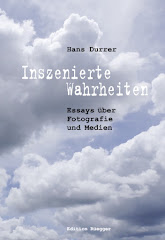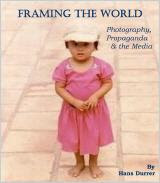On 19 August 2007, the International Herald Tribune (the online version) published a short piece about a fire in the vacant (since 9/11) Deutsche Bank building at ground zero in New York City. The piece started like this:
"People looked up, as they did that day in September, in awe and in horror. They clustered in goupd, holding cellphones to their ears and cameras to their eyes as a plume of smoke hovered over Lower Manhattan once again.
It was more than the sight that reminded some of the Sept. 11 terrorist attacks nearly six years ago. It was the sounds and the smell: breaking glass clanking its way down a burning skyscraper, a helicopter's whir somewhere above, an acrid, noxious scent filling the streets.”
Some people were reminded of 9/11? That is understandable, of course, not least given the location of the Deutsche Bank building near ground zero. Yet to allude to it as excessively as these first few paragraphs does seem not only odd but clearly unnecessary. After all: this event had absolutely nothing to do with 9/11. So why repeatedly mention it? Anybody’s reminded of the repeated attempts of the Bush administration – sorry, of the Bush government [these people do clearly not administer, they do govern] – to link the attacks on the Twin Towers to Iraq? Needless to say it is – I’m not always sure though – somewhat unlikely that the political agenda of the International Herald Tribune and of the Bush government should be the same. So, what about money? The magic-formula 9/11, after all, will surely sell copies.
By the way, this is a useful reminder: “In addition to increasing government spending after 9/11, Bush asked Americans to go shopping, and they did -- bringing an economy shattered by the attacks back to full speed within a few years” reported CNN on 11 September 2006 (“9/11 trauma persists five years later”).
***
It wasn’t so much the article that had caught my attention, it was a photo (a slide show with nine shots could be found on the website) by Josh Haner/The New York Time that showed a man holding the American flag. Its caption read: Paul Isaac of Brooklyn, an auxiliary firefighter who worked on 9/11, holds a flag in support of those at the scene.
To read photographs is personal, and inevitably so. Such reading depends on one's upbringing, culture, interests, gender, preferences as well as dislikes; it is also subjected to one's moods. Being Swiss, I’ve never really understood (emotionally, that is) the North American love for the flag (this love exists in all cultures, I know, but the man in this picture holds an American flag and it is to this picture I’m here referring to) and so it was with utter incomprehension that I looked at this photo.
Why would a flag, in this situation, symbolize support? Not that I doubt that this man thinks that it does, and not that I doubt that quite some people will interpret this picture this way. Although, to hold a flag when a fire breaks out does seem quite a stretch, doesn’t it? But that is actually not my concern here, my concern here is that such a photo is published in the context of a blaze that so far seems just an ordinary blaze. In other words, a picture that seems to symbolize resolve in the face of an attack on the sovereignty of a nation does not at all belong into this context.
But, hey, you might say, this man meant to hold his flag in this context, he meant to show support, and it is not up to you to tell him what to do or how to do it. The photojournalist’s task is to record pictures of what happens. That’s it. Quite. But to show this photo accompanying an article that uses the magic formula 9/11 so often that one comes away with thinking about 9/11 and not about an ordinary fire is not only misleading, it is irresponsible.
Monday’s (20 August 2007) New York Times again evoked 9/11. One of headlines on the front page read: “Scarred on 9/11, a Firehouse Mourns Again.” Not only the government of G.W. Bush is profiting from deliberately made up 9/11 connections, the mass media (the headline of the blaze article of the Los Angeles Times on Sunday, 19 August 2007 read: “Manhattan blaze recalls 9/11”) is doing exactly the same.
Well, if one can benefit.
***
The issue here is a bit bigger than that of showing pictures in context while at the same time providing us with adequate information so that we can understand what we are looking at, the issue here is prop-agenda, as the British musician Brian Eno once put it. By this he means the kind of propaganda that hardly ever gets mentioned.
"Its greatest triumph is," Brian Eno wrote in an article for The Observer (that was in 2004), "that we generally don't notice it — or laugh at the notion it even exists. We watch the democratic process taking place — heated debates in which we feel we could have a voice — and think that, because we have "free" media, it would be hard for the Government to get away with anything very devious without someone calling them on it. ... It isn't just propaganda any more, it's "prop-agenda." It's not so much the control of what we think, but the control of what we think about."
Needless to say, this control is as much exercised by the media as it is by governments.




























